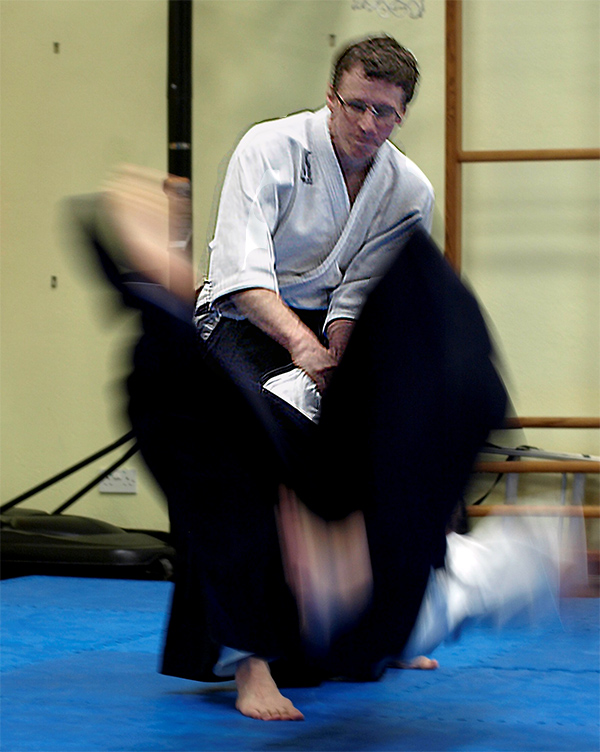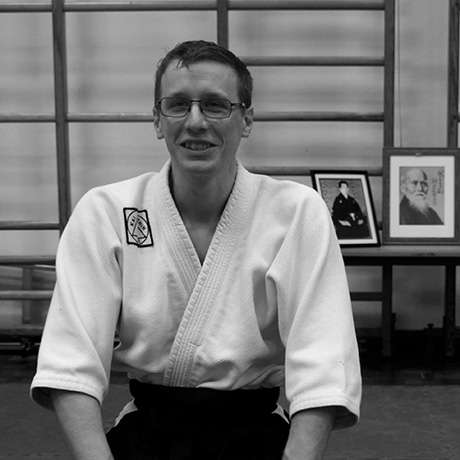The long-term benefits of Ukemi have been proved by masters
Whereas the rest of my advice has no basis more reliable
Than my own meandering experience, I will dispense this advice now…”
What is the role of Uke?
Is it to go down when Tori throws them?
Or perhaps to block Tori at any opportunity to make them work for it?
Perhaps Uke is just there as a formality?
The truth is that Uke is an essential part of your learning process. Bad Uke bread bad Aikidoka. Furthermore, bad Ukemi breads short-lived Aikidoka. I have yet to experience or be witness to any serious injuries as a result of incorrect technique by Tori. That is not to say I’ve never seen Tori do something monumentally stupid… far from it. But strong Ukemi will save you from this when it occurs (and it will). Conversely, all of the serious injuries I have witnessed have been the result of bad Ukemi.
Ukemi is an essential skill, it protects you from harm and allows you to teach your fellow Aikidoka how to do Aikido correctly. You don’t need to know how to perform a technique in order to help someone learn it, if your Ukemi is genuine, then when they do it wrong, it won’t work.
Something I see too often is Uke giving up their centre/posture/hara, which most commonly comes in the form of an over-exaggerated lunge punch. What can be very telling is to simply remove Tori from the equation entirely. If you think someone is overextending themselves, just remove yourself from the equation. You can choose to warn them or not, but let them punch/kick/grab/whatever and see what they do.
If done correctly, without the interference of Tori (that meddling so-and-so) Uke should execute their decisive blow and conclude in a position of strength, with good posture, ready to continue to fight. In reality, this strike would only ever be the first in what will be a flurry of intended activity, the beginning (or continuation) of, yes, combat.
What you might find as Uke, when Tori is removed, is that the movement you have been repeating for hours on end is in fact self-sacrifice and by removing Tori and simply attacking ‘nothing’, it will become very obvious whether you are throwing away your posture or not.
I cannot say it firmly enough… It is highly detrimental to every principle you painstakingly work to master to practice throwing away your own posture every single week during Ukemi. Don’t do it.
We don’t typically teach how to strike with open hand in Aikido. However, there is a very real need to know how to Atemi, but at no point will you usually spend time in a class rehearsing a punch for hours on end. As a result, this can often be a weakness for those that have come to Aikido first, by which I mean, those that have done Karate, Kungfu (in any one of its many forms) or any other striking art first, will have an advantage here.
There’s no simple answer to this. If you want to know how to strike, you should ask and then practice. It can be a good reason to explore other Martial Arts, take from them anything you can, agility, endurance, posture, strength, and (yes) technique. If you keep it up, I hope you will find what I did… all of the principles of Aikido, including but not limited to Kokyu, balance breaking, movement, and power, are all the same once you penetrate the surface differences of another Martial Art. I can guarantee you that if you have brought sincerity to your Aikido practice, then you will find yourself teaching as much as you learn in any Martial Art, anywhere you go, but this is a topic for another article.

Back to Ukemi… Ukemi is a careful balance, one that takes many years to master. You should:
Never throw away your posture.
Never simply ‘let’ Tori throw you.
Always keep yourself safe.
Go down fighting.
That last point is hard to sell without creating monsters. What I mean by this is that Tori will not benefit from compliant Ukemi. I say this often, but I hope no one ever has to use Aikido to defend themselves or someone else, but if ever they do, I guarantee you, their assailant will not be compliant. What does this mean for your Ukemi? It means:
- You should not choose to fall unless you have been presented no other option ~ you then must fall in whatever way is safest for you.
- You should not choose to lie there unless the only way out will cause you harm ~ in which case, you don’t move a muscle.
- You should not choose to do anything that would not benefit you unless Tori firmly give you no other option ~ you then use Ukemi to protect yourself.
- There are caveats, of course, including the fact that this all goes out the window when you are working with lower Kyu grades. In this instance, you truly are the instructor and while someone is just starting to ‘get on the rails’ you should do all you can to help, push, pull, prod and encourage them in the right direction… you still don’t throw yourself or lunge-punch yourself to the floor, you just don’t make their lives any harder than it needs to be… not yet.
It may not surprise anyone reading this to know that Saito Morihiro shihan covered this entire article with a single sentiment… Sincerity. Bring sincerity to your Ukemi and you will succeed.
Finally, of all the skills I have learnt in my time within Aikido, Ukemi is the one thing I have actually used off the mat to defend myself… from gravity, granted, but nonetheless. It’s a useful life skill that can save you from harm, even just around the house or when playing with the kids.
Embrace it, own it, use it and don’t give it away for free.
by Mann Sensei

